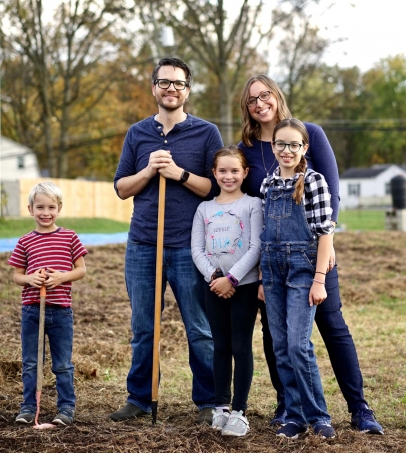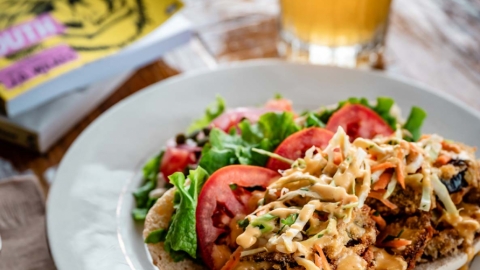Walton Garlic Farm: Small but Mighty
The space is improbable—a vacant lot off Cleveland Avenue next to Pablo’s Tires—but the results are impressive. This season the tiny .22-acre lot will produce 4,000 bulbs of garlic for Ryan and Sara Walton of Worthington to sell next summer. Welcome to the Walton Garlic Farm.
Growing up in Waynesfield, Ohio, Ryan’s idea of a farm was the 1,700 acres where his dad raised corn, soybeans and popcorn. Sara, from Upper Arlington, had no garden but harbored a vague yearning to marry a farmer. When the two met as students at The Ohio State University, Ryan, now 37, was a business major who had put farming aside, because his dad viewed conventional agriculture as “unstable.” Sara was majoring in human development and family sciences.
The couple married in 2006, and at age 25 obtained legal custody of 12-year-old triplets (a story for another time), eventually adding another three biological children to the family. Ryan worked at OSU’s Wexner Medical Center (currently as a data analyst), while Sara homeschooled the kids. But he “never lost the agricultural itch.”
Soon enough, Ryan proposed the idea of an urban farm to Sara, who was receptive because she knew how much he loved farming. “Try garlic,” suggested gardening friends in New York state.
“It’s easy to grow—pest-resistant, not fussy,” Ryan says. They still have seedstock from their original planting of just 69 bulbs, picked up on sale at the local garden center when they purchased their Christmas tree in 2014.
The garlic grew as promised, and so did their aspirations. In 2017, Ryan completed the Ohio Master Urban Farmer Workshop series, an intensive educational program developed by OSU Extension to equip participants to grow and market food in the city.
“We talked about soil health, growing different foods, fruits, vegetables, fruit trees, pest management, organic growing, grant programs, to name a few,” Ryan says. Also through OSU Extension, the Waltons learned that they could lease land for their garlic farm through the Columbus City Land Bank.
“The City of Columbus has been great to work with,” Ryan says. “It wasn’t a laborious process to apply.” In addition to the land, the City provides a rain barrel and soil and compost.
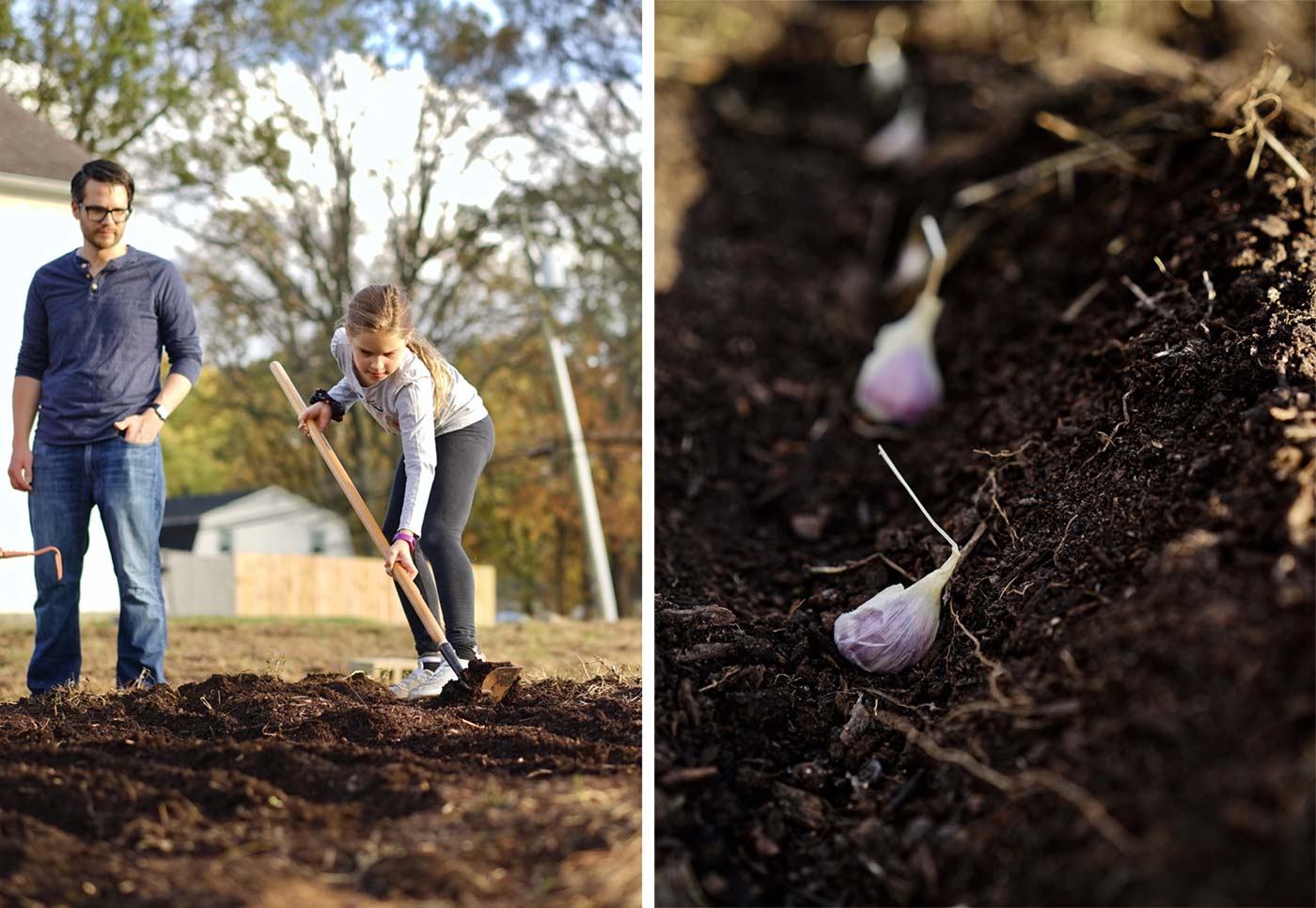
Left: Annabelle helps with the planting. Right: Garlic cloves are planted in November for harvest in the summer.
HOW DOES YOUR GARLIC GROW?
Sara explains that garlic planting begins in “mid- to late-November, depending on the weather.” One of the autumn prep jobs is to split the bulbs into cloves, a repetitive task that the family shares whenever a few minutes are available.
They grow the garlic naturally, without insecticides or pesticides. Five-year-old Liam likes “covering it with dirt” when they plant it, and the three children are all active farmers.
Come spring, Ryan and Sara check the garlic weekly, with kids in tow. “It’s a residential area, and we’ve met some of the neighbors,” Ryan says. “The tire guys are friendly and they help get the mower in and out of the van when Sara mows. They let the kids use their bathroom.”
During the spring and summer, the Waltons mow each week and haul water to thirsty garlic—as much as 50 to 100 gallons of water, two or three times a week, when rainfall is scant. Nine-year-old Annabelle relishes the prospect. “I love watering it with troughs and water barrels—it’s so fun!”
In mid-June, they begin cutting garlic scapes, the curly, bright green flower stems that sprout from the tops of hardneck garlic. (Garlic is either hardneck or softneck; softneck garlic produces up to 15 small cloves per bulb and hardneck garlic has four to eight large cloves.) Removing the scapes directs the plant’s energy toward growing the bulb rather than a flower, and scapes have become a popular produce offering.
In June and July, the Waltons dig up the bulbs and dry them for two or three weeks in their home’s crawl space before chopping off the leaves and roots and cleaning the bulbs to ready them for sale.
“We bring a basket outside with our scissors and just work on one variety at a time,” Ryan says. Once, “the neighbor kids came over while the kids and Sara were working and asked if they could help. We taught them and they helped trim stalks.”
“It’s very yesteryear,” Sara says with a smile.
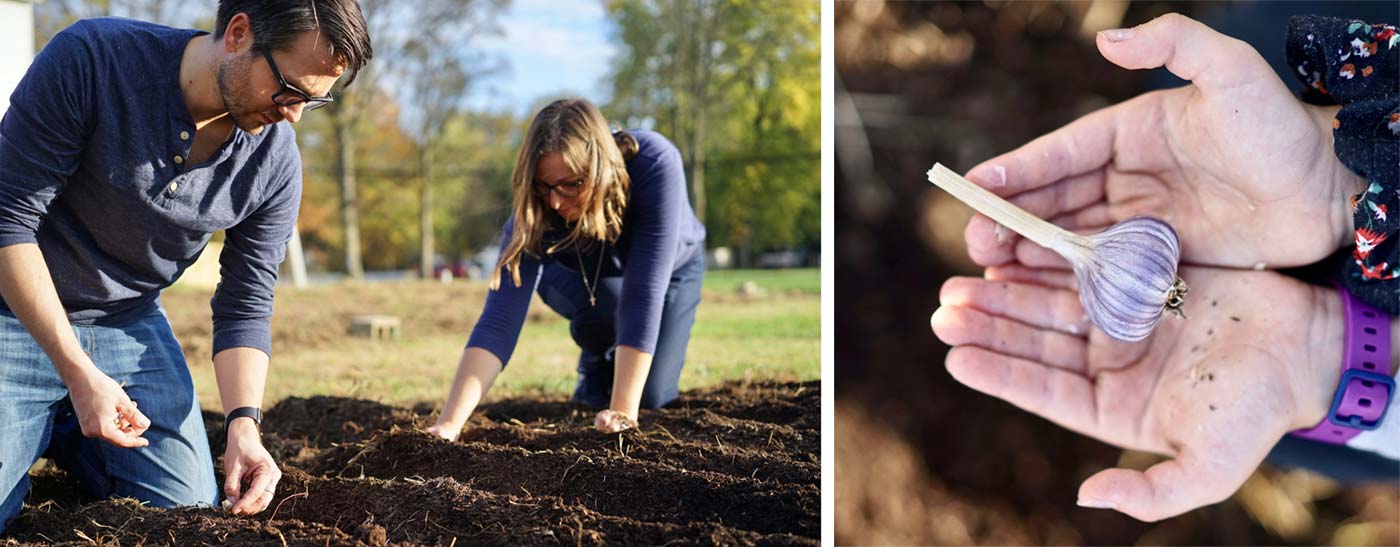
Left: The Waltons lease land for their farm through the Columbus City Land Bank. Right: Duganski garlic
THE GARLIC MARKET
Many market vendors grow garlic as one of their offerings, but the Walton Garlic Farm is unique locally in growing only garlic. In 2019, they began selling scapes and bulbs at the Westerville Farmers Market, with the two girls helping to bag and check out.
“I want them to feel like they’re a part of it,” Ryan says. “That’s how I was raised.”
“Selling it is harder than I expected,” says 11-year-old Marrehn seriously. In her overalls and checked shirt she looks the part of a farm girl.
Many customers, says Ryan, have seen only softneck garlic. But part of the Waltons’ marketing strategy is to introduce people to new varieties. To that end, they grow two classically mild softneck varieties—Idaho Silver and California Early—and six hardneck varieties: German White (robust, long-lasting flavor); German Giant (strong, spicy, very hot eaten raw); Chesnook Red (strong with mellow aftertaste, good for baking); Music (warm rather than hot, long-lasting flavor); Spanish Roja (sweet, robust, lingering flavor); and Duganski (deep earthy flavor, Sara’s favorite.)
Although it is easy to grow, most garlic sold in American supermarkets comes from China and California. Customers have commented that grocery store garlic “doesn’t have oil” when pressed, like the Waltons’ garlic does.
Ryan and Sara would like to purchase a house and land near Delaware. Theoretically, at least, a mere 1.7 acres would support 150,000 bulbs, enough to sustain full-time garlic production. But although Ryan has no plans to quit his day job, he and Sara are happy to keep their little family farm growing.
“I’d rather dig in the dirt than do an Excel spreadsheet!” Sara says. “Thankfully, Ryan excels in the business areas, so we make a great team.”
Ryan’s enthusiasm for farming has clearly spread. Sara sums up the family feeling: “Farm work is enjoyable. You go home feeling like you accomplished something.”
- Find out more about Walton Garlic Farm at waltongarlicfarm.com. For information about leasing City of Columbus land for farming or gardening, see the website.
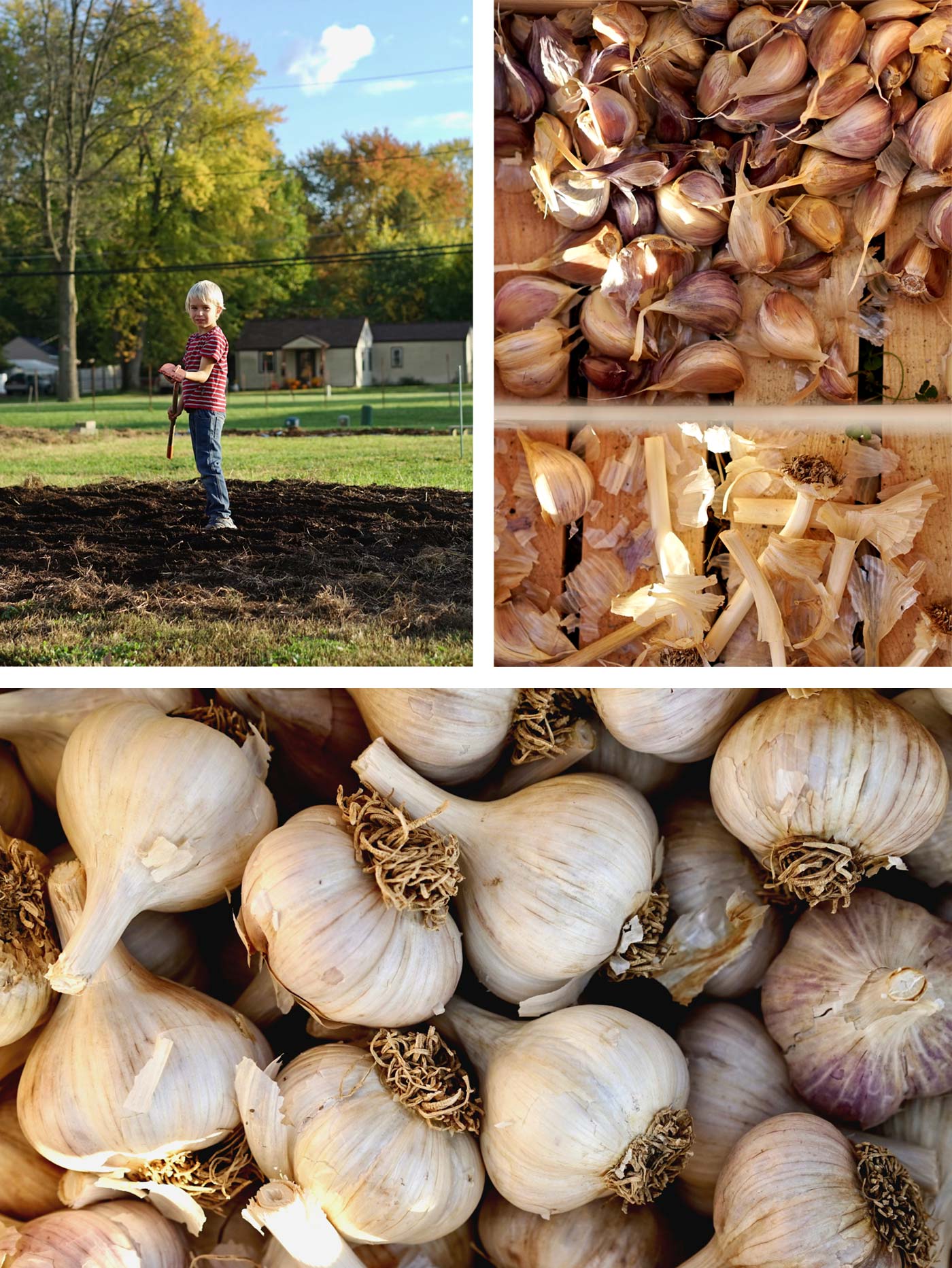
Top Left: Five-year-old Liam helps with the work. Top Right: The garlic bulbs are broken into cloves for planting. Bottom: Music garlic


